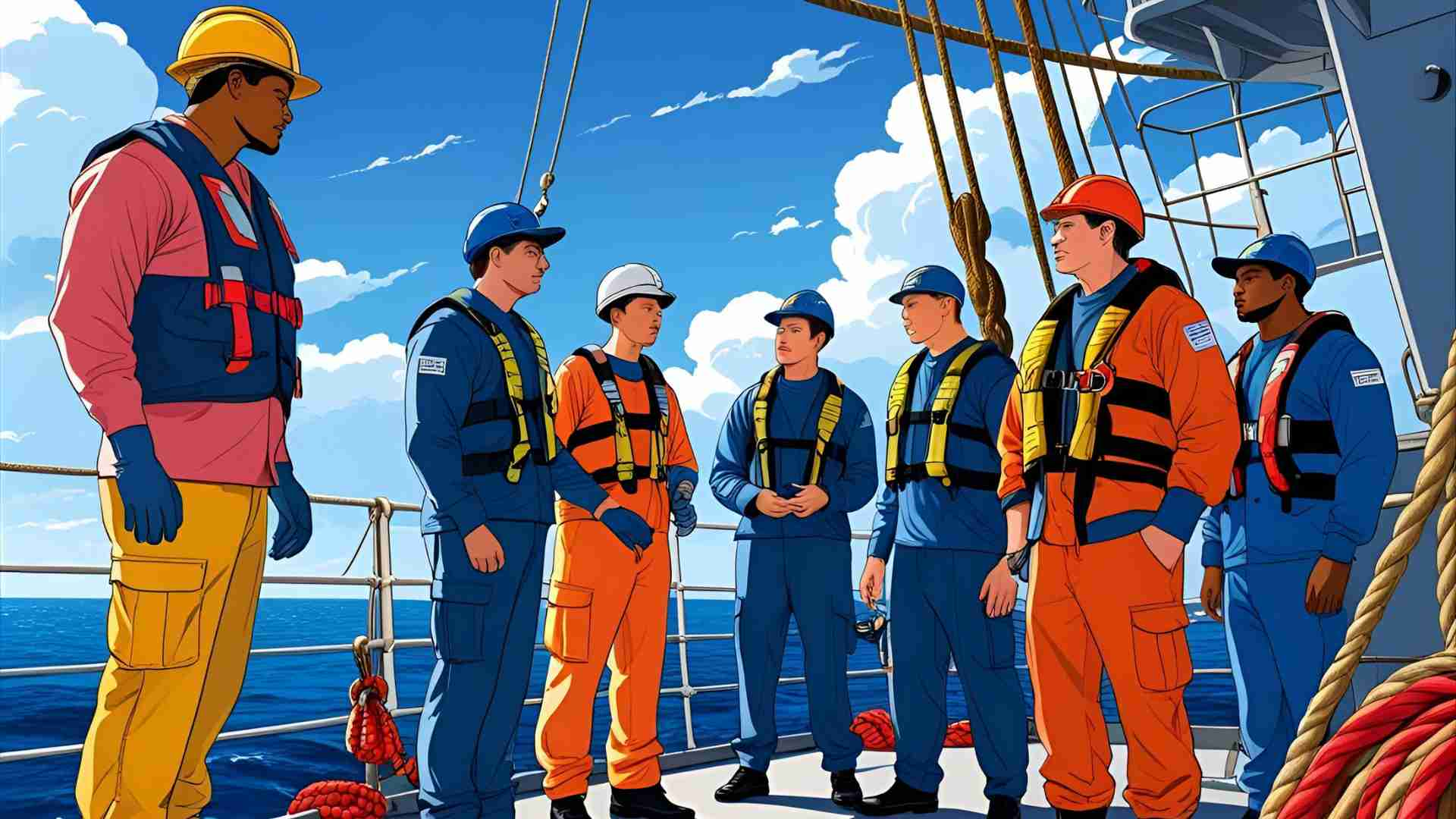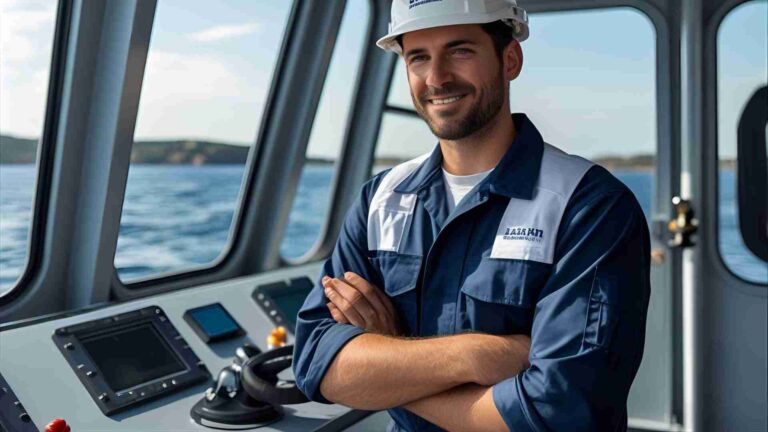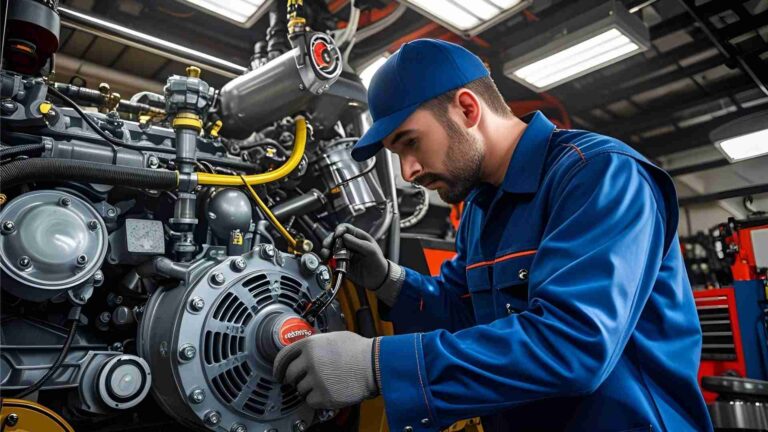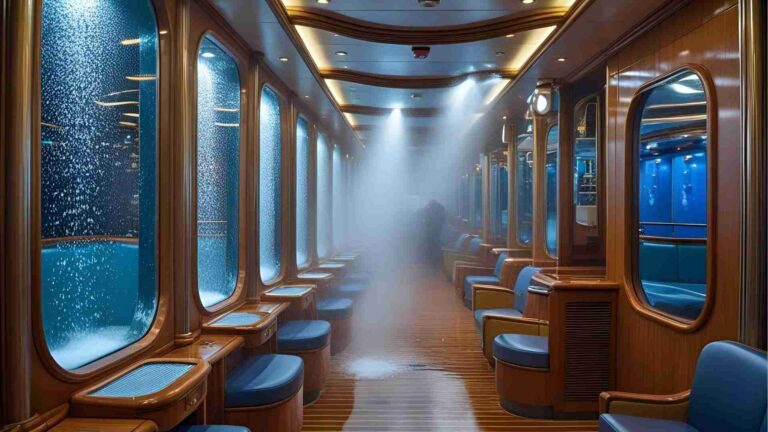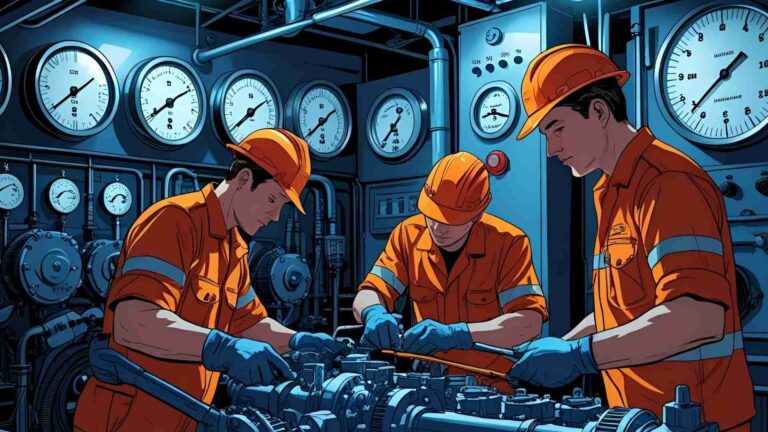10 Essential Safety Procedures Every Seafarer Must Know
Discover the 10 essential safety procedures every seafarer must know to ensure safety, protect the environment, and maintain vessel integrity at sea.
The maritime industry is a cornerstone of global trade, with ships transporting over 80% of the world’s goods by volume. Yet, the open sea is an unpredictable and often perilous environment, where storms, equipment failures, and human errors can lead to catastrophic consequences. For seafarers, safety is not just a regulatory obligation but a lifeline that protects lives, preserves the marine environment, and ensures operational success. This article outlines the ten essential safety procedures every seafarer must master to navigate the challenges of maritime operations effectively. From personal protective equipment to continuous training, these protocols form the foundation of a robust safety culture at sea.
The Importance of Maritime Safety
Seafaring is inherently risky. Harsh weather, complex machinery, and long working hours expose crew members to hazards like slips, fires, collisions, and even piracy. According to the International Maritime Organization (IMO), human error contributes to over 75% of maritime accidents, underscoring the need for rigorous safety protocols. Neglecting these measures can result in loss of life, environmental disasters like oil spills, and financial losses in the billions. For example, the 2010 Deepwater Horizon spill cost over $60 billion in damages and cleanup, highlighting the stakes involved. By adhering to safety procedures, seafarers can mitigate risks, protect ecosystems, and maintain the integrity of their vessels and cargo.
1. Personal Protective Equipment (PPE)
Role of PPE in Maritime Safety
Personal Protective Equipment (PPE) is the first line of defense against occupational hazards on ships. From slippery decks to chemical exposures, PPE minimizes the risk of injuries and ensures crew members can perform tasks safely. A strong PPE culture enhances overall vessel safety and crew well-being.
Types of PPE and Their Uses
| PPE Type | Purpose |
|---|---|
| Helmets/Hard Hats | Protect against head injuries from falling objects or collisions. |
| Safety Glasses/Goggles | Shield eyes from debris, chemicals, or intense light. |
| Hearing Protection | Prevent noise-induced hearing loss in high-decibel environments. |
| Protective Gloves | Guard against cuts, abrasions, chemical burns, and temperature extremes. |
| Safety Footwear | Protect feet from falling objects, punctures, and slips. |
| Life Jackets/Survival Suits | Ensure survival in overboard incidents or adverse weather. |
| Respiratory Protection | Protect against inhalation of hazardous fumes, gases, or particulates. |
Best Practices for PPE Use
- Selection: Match PPE to specific task hazards (e.g., chemical-resistant gloves for handling solvents).
- Fit and Comfort: Ensure proper fit to avoid impeding movement or reducing effectiveness.
- Training: Educate crew on PPE use, maintenance, and limitations.
- Inspection: Regularly check PPE for wear and replace damaged items.
- Compliance: Adhere to IMO and national standards, such as SOLAS (Safety of Life at Sea) regulations.
By integrating PPE into daily operations, seafarers can significantly reduce injury risks and foster a proactive safety mindset.
2. Man Overboard (MOB) Protocol
Understanding MOB Procedures
A man overboard incident is a life-threatening emergency requiring immediate action. The risk of hypothermia, drowning, or being lost at sea demands a swift, coordinated response. The MOB protocol focuses on rapid detection, communication, and recovery to maximize survival chances.
Immediate Actions for MOB
- Sound the Alarm: Activate the MOB alarm using the ship’s whistle or verbal commands.
- Mark Position: Deploy a lifebuoy with light/smoke markers and log the GPS position.
- Notify the Bridge: Alert the bridge to initiate rescue maneuvers.
- Maintain Visual Contact: Assign crew to keep the person in sight.
- Prepare Rescue: Launch rescue boats or deploy equipment with trained personnel.
Training and Drills
Regular MOB drills are critical for preparedness. These should include:
- Simulated scenarios to practice alarm activation and rescue operations.
- Training on rescue equipment and first aid for hypothermia.
- Adherence to IMO guidelines, such as those in the International Convention on Standards of Training, Certification and Watchkeeping (STCW).
- Post-drill evaluations to identify and address weaknesses.
Effective MOB protocols can mean the difference between life and death, making rigorous training non-negotiable.
3. Fire Safety and Prevention
Common Causes of Shipboard Fires
Fires pose a severe threat on ships due to confined spaces and flammable materials. Common causes include:
- Electrical Failures: Faulty wiring or overloaded circuits.
- Engine Room Hazards: Fuel or oil leaks igniting on hot surfaces.
- Galley Operations: Grease fires or unattended cooking equipment.
- Smoking: Improper disposal of cigarettes in flammable areas.
- Cargo: Flammable or chemical cargo mishandling.
Fire Prevention Measures
- Maintenance: Regular inspections of electrical systems and engine rooms.
- Training: Educate crew on fire risks and safe handling of flammable materials.
- Safety Plans: Display evacuation routes and firefighting equipment locations.
- Ignition Control: Restrict smoking and monitor high-risk areas.
Firefighting Equipment and Techniques
| Equipment | Use |
|---|---|
| Fire Extinguishers | Tackle small fires (e.g., water for wood, CO2 for electrical). |
| Fire Suppression Systems | Automated CO2 or water mist systems for engine rooms and cargo areas. |
| Fire Hoses/Hydrants | High-pressure water for larger fires, strategically placed. |
| Fireproof Gear | Suits, gloves, and helmets for safe firefighting. |
Regular fire drills, compliant with SOLAS requirements, ensure crew proficiency in using equipment and executing evacuation plans.
4. Emergency Evacuation Procedures
Evacuation Plans
A robust evacuation plan is critical for emergencies like fires or collisions. Key components include:
- Routes: Clearly marked paths to muster stations and lifeboat areas.
- Muster Stations: Designated areas for headcounts and instructions.
- Role Assignments: Specific duties for crew, such as assisting passengers or operating lifeboats.
- Communication: Use of alarms, public address systems, and radios.
Life-Saving Appliances
| Appliance | Specifications |
|---|---|
| Lifeboats/Liferafts | SOLAS-compliant, regularly inspected, quick-launch mechanisms. |
| Life Jackets | One per person, buoyant, fitted with lights and whistles. |
| Immersion Suits | Thermal protection for cold water survival. |
| Distress Signals | Flares, EPIRBs, and SARTs for rescue coordination. |
Conducting Drills
- Frequency: Conduct drills per SOLAS requirements (e.g., monthly).
- Scenarios: Simulate fires, flooding, or abandon-ship situations.
- Evaluation: Assess performance and update plans based on feedback.
Effective evacuation procedures ensure orderly responses, minimizing panic and maximizing survival rates.
5. Navigation and Watchkeeping Safety
Safe Navigation Basics
Safe navigation prevents collisions, groundings, and other incidents. Key practices include:
- Chart Planning: Use nautical charts and weather data to plan routes.
- Position Monitoring: Regular GPS checks to stay on course.
- Speed Control: Adjust speed based on visibility and traffic.
Watchkeeping Responsibilities
Watchkeepers maintain constant vigilance, logging data and communicating with the bridge. They must be ready to respond to navigational emergencies, such as sudden weather changes or vessel proximity alerts.
Navigational Aids
| Aid | Function |
|---|---|
| ECDIS | Real-time route tracking and hazard alerts. |
| Radar/AIS | Detect vessels and obstacles in low visibility. |
| GPS/Gyrocompass | Provide precise positioning and heading data. |
Training on these systems, per STCW standards, ensures accurate navigation and collision avoidance.
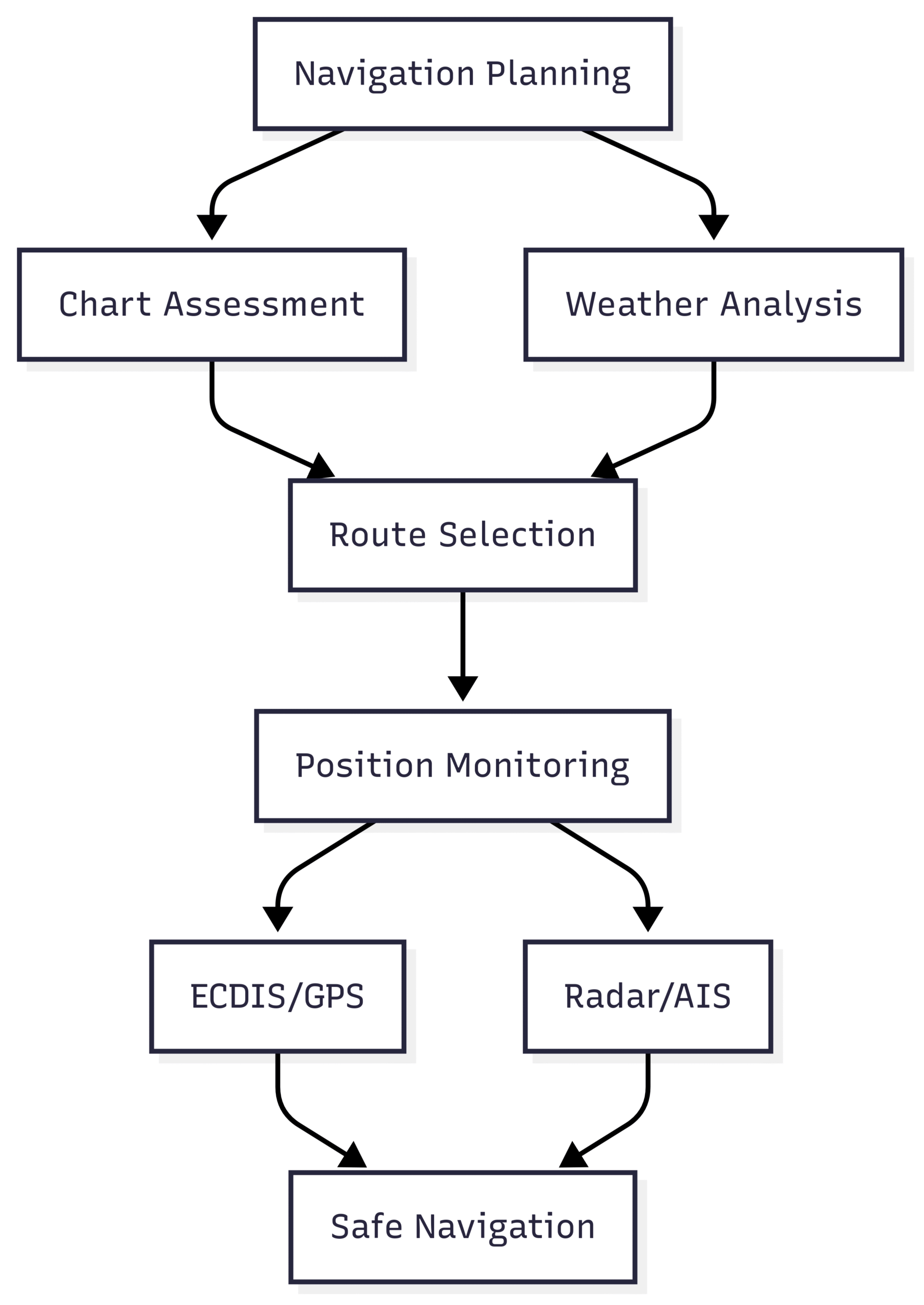
6. Hazardous Materials Handling
Types of Hazardous Materials
Ships carry materials like chemicals, petroleum, gases, explosives, and radioactive substances, each requiring careful handling to prevent accidents or environmental harm.
Safety Measures
- Labeling/Storage: Follow IMDG Code for proper labeling and secure storage.
- Spill Prevention: Use secondary containment systems.
- Ventilation: Ensure adequate airflow in storage areas.
- PPE: Wear appropriate gear during handling.
Training and Certifications
- HAZMAT Training: Covers properties, handling, and emergency response.
- IMDG Certification: Mandatory for dangerous goods handling.
- Refresher Courses: Keep crew updated on regulations.
Proper handling reduces risks to crew health and the environment.
7. Security Awareness and Anti-Piracy Measures
Security Protocols
The ISPS Code provides a framework for maritime security, including:
- Access Control: ID checks and secure entry points.
- Surveillance: CCTV and patrols in high-risk areas.
Anti-Piracy Strategies
- Risk Assessment: Avoid high-risk areas using piracy reports.
- Deterrents: Install razor wire, water cannons, or citadels.
- BMP Compliance: Follow Best Management Practices for piracy prevention.
Training
- Security Awareness: Train all crew on threat identification.
- Anti-Piracy Drills: Simulate attacks to practice response strategies.
These measures protect against piracy, terrorism, and smuggling, ensuring safe transits.
8. Health and Medical Preparedness
Medical Facilities
Ships must have:
- Medical Room: Equipped with first aid kits, oxygen, and defibrillators.
- Medications: Stock for common ailments and emergencies.
Managing Medical Emergencies
- Response Plan: Detail procedures for injuries or illnesses.
- Telemedical Support: Consult experts remotely.
- Medevac: Coordinate with coastal authorities for evacuations.
Health and Hygiene
- Sanitation: Regular cleaning and waste management.
- Disease Prevention: Vaccinations and health screenings.
- Nutrition: Balanced meals to support crew health.
These practices ensure crew well-being in remote environments.
9. Environmental Protection and Pollution Control
Regulations
- MARPOL: Governs oil, sewage, garbage, and emissions.
- Ballast Water Management: Prevents invasive species spread.
- Annex VI: Limits sulfur and nitrogen oxide emissions.
Pollution Prevention
- Oil Spills: Use oil-water separators and monitor fuel systems.
- Emissions: Adopt low-sulfur fuels or scrubbers.
- Waste Management: Follow MARPOL Annex V for garbage disposal.
Waste Control Measures
| Waste Type | Management |
|---|---|
| Garbage | Segregate, store, and dispose per MARPOL Annex V. |
| Sewage | Treat using marine sanitation devices. |
| Hazardous | Secure storage and proper disposal. |
Compliance protects marine ecosystems and supports sustainable operations.
10. Continuous Training and Drills
Importance of Training
Regular training ensures crew competence, regulatory compliance, and risk mitigation. It fosters a safety-first culture across all ranks.
Types of Drills
| Drill Type | Focus |
|---|---|
| Fire Drills | Fire detection, containment, and extinguishing. |
| Abandon Ship | Evacuation and lifeboat operations. |
| Man Overboard | Rescue and recovery procedures. |
| Medical Emergency | First aid, CPR, and medevac coordination. |
| Security/Piracy | Threat response and anti-piracy measures. |
Updating Protocols
- Evaluation: Debrief after drills to identify gaps.
- Feedback: Incorporate crew input to refine training.
- Technology: Use simulators and e-learning for engagement.
Continuous improvement keeps training relevant and effective.
Conclusion
Maritime safety is a collective responsibility that demands unwavering commitment. By mastering these ten essential procedures—PPE, MOB protocols, fire safety, evacuation, navigation, hazardous materials handling, security, medical preparedness, environmental protection, and continuous training—seafarers can navigate the seas with confidence. These practices not only comply with international regulations like SOLAS, STCW, and MARPOL but also safeguard lives, protect the environment, and ensure operational success. Maritime organizations must foster a culture of safety through rigorous training and adherence to best practices, ensuring every voyage is safe, efficient, and sustainable.
Take the Next Step
Enhance your maritime safety knowledge with comprehensive training programs. Contact us for tailored courses covering PPE, emergency response, and regulatory compliance to elevate your crew’s preparedness and operational excellence.
Happy Boating!
Share 10 Essential Safety Procedures Every Seafarer Must Know with your friends and leave a comment below with your thoughts.
Read Marine Electronics, Marine GPS, Fishfinder, Chartplotters … until we meet in the next article.
